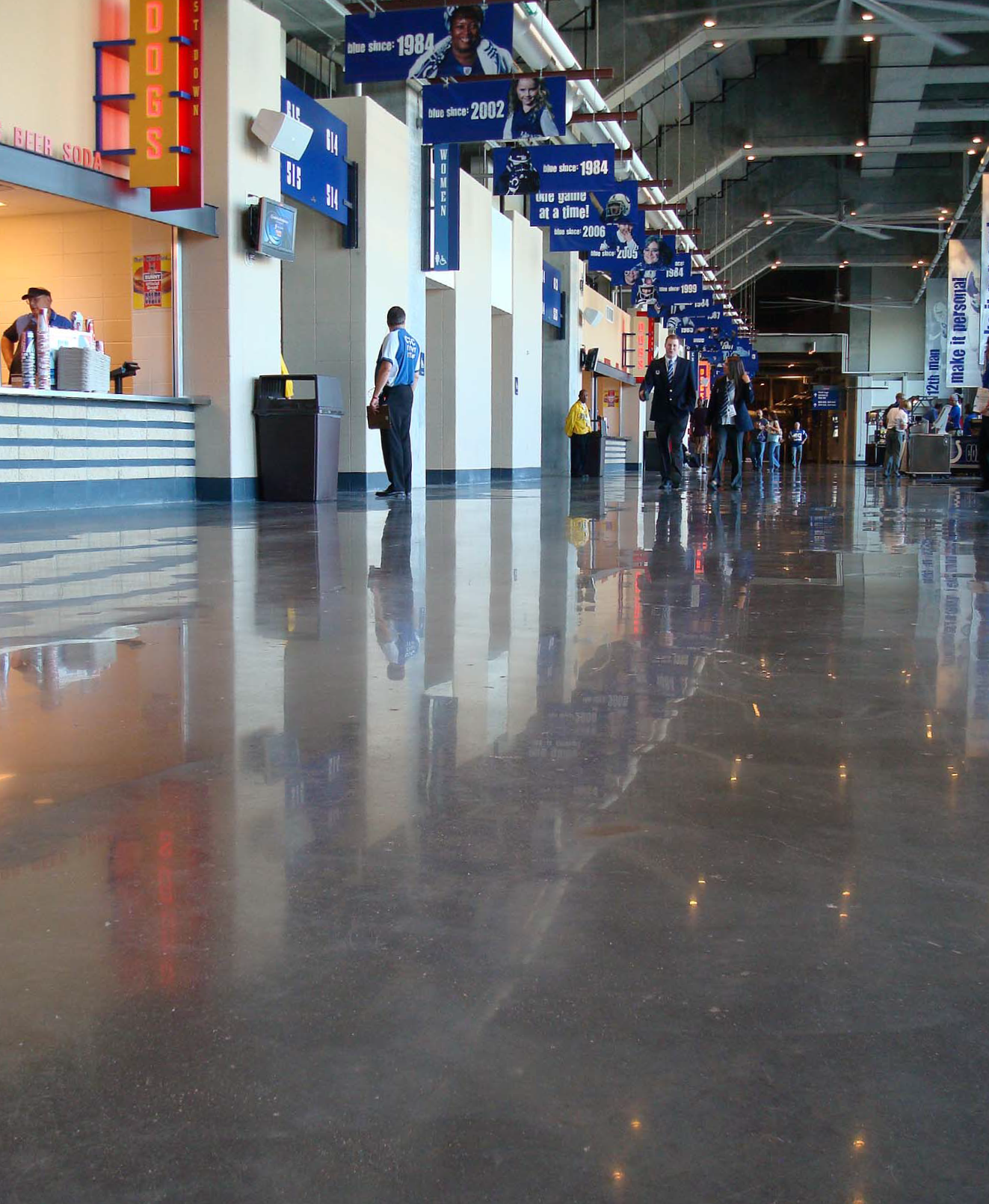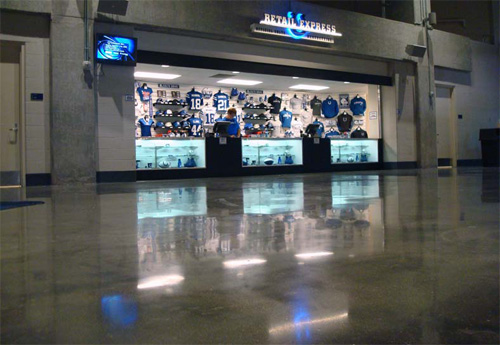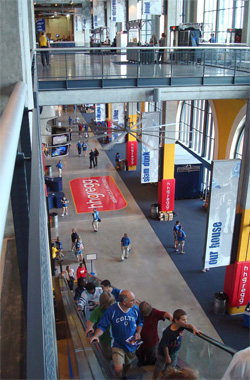
Arenas and stadiums are a market that is gaining momentum in polished concrete. Between high schools, colleges and professional sports teams, there are a lot of these venues around the country. As they come up for remodel, polished concrete is a great option for the flooring on concourses and even under seats.
Venue management looks at the cost to remove whatever flooring type they have currently (usually some version of epoxy) and replace it. Polished concrete does a double duty in removing the old and replacing it with something low-maintenance.
We have done several of these projects over the last couple of years. I want to discuss some of the pitfalls that we have run into while pricing out and the solutions that will help you with this important revenue source.
The first thing that you need to look at is history. What surface is installed currently? If it is colored epoxy flooring or tile of any sort, then you need to ask what prior renovations have been done to this building. A lot of times, no one knows exactly what has been done over the years. My advice if you can’t see the floor is to price your project with a standard per-foot cost and specifically include the process that you are planning to use. Include diamonds and chemicals. This will protect you later if you have to do a significant amount of extra work. You have the trail already marked to explain your change order.
Another important issue is patching. My recommendation is that you include a line in your bid that specifics an amount of material. An example is: “Included in our price is 100 pounds of patching material.” This shows the customer that you are aware of their potential problem and that you are proactively offering a solution, but only to a point. As you are going through the job and you start to get close to your 100 pounds, go talk to your customer, explain where you are at and discuss the change order for the additional patching that might be above your quote.
Finally, the biggest pitfall that can ultimately affect your profitability with arenas and stadiums is steps and areas under seating.

On a recent project we charged $10 per foot on the steps and $4.50 per foot to remove the epoxy under the seats and spray clear sealer. My bid for the breakdown of these areas was $160,000 for about 35,000 square feet. Our cost for this portion of the project came to $185,000!
The steps and areas under the seats took extensively longer that we planned. We used two HTC 650s on the under-seat areas, but as I have figured out the hard way, the horizontal spaces in this type of building are not usually wide enough to get a power trowel on at the time of construction, so they are very wavy. These areas are also the hardest on your guys, because they are doing most of the work on their knees.
So just make sure that you are considering these factors on your future projects.
With these considerations, there is a huge potential opportunity in picking up this type of work. The concourses are standard flooring that wears exceptionally well as polished concrete. The maintenance and replacement savings easily sell these projects for you.

















